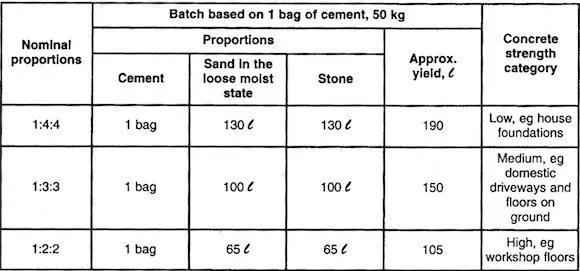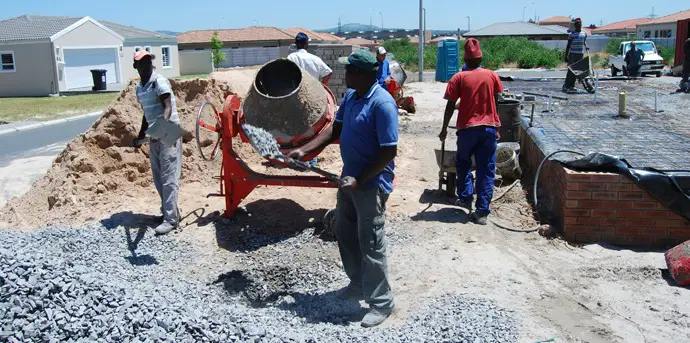Concrete mix ratio is a vital topic in concrete mix design. The four basic ingredients for making concrete are: Portland cement, sand, aggregate (stone) and water. The strength of concrete mixture depends on the ratio in which these four ingredients are mixed.
Concrete mix ratio of 1:3:3 – On mixing 1 part cement, 3 parts sand with 3 parts aggregate produces concrete with a compressive strength of 3000 psi.
On mixing water with the three ingredients, a paste is formed that binds them together till the concrete mix gets hardened. The strength concrete is inversely proportional to the water/cement ratio. It means the more the water, the weaker the concrete and vice versa.
Accurate concrete mixing ratio can be maintained by measuring dry materials using buckets or similar containers.
Mixing ratios for making one cubic yard (27 cubic feet) of concrete having strength of 300psi:
- Cement – 517 pounds
- Sand – 1560 pounds
- Stone – 1600 pounds
- Water – 32 to 34 gallons
The mix that you get is good for most concrete projects.
One cubic yard of concrete will cover an area of 8 feet X 10 feet with a thickness of 4 inches. When you increase thickness to 6 inches, one cubic yard of concrete covers an area of 52 square feet and 65 square feet with a thickness of 5 inches.
When you want to have one cubic yard of concrete with strength of 4000 psi, you need to keep following ratios:
- Cement – 611 pounds
- Sand – 1450 pounds
- Stone – 1600 pounds
- Water – 33 to 35 gallons
So, you can see more cement and less sand is needed to get stronger concrete mix, which is ideal for driveways, pool decks, exterior patios, sidewalks and commercial garages. Irrespective of the batch size, it is imperative to keep the ingredients in the same ratio.
For very small projects you may buy a packaged concrete mix, which already contains cement, sand, and gravel in the correct ratio and you need to add only water water to create fresh concrete.
The above concrete mixing ratios enable the concrete to attain its full strength in about 28 days. Curing must to be continued atleast for 7 days under normal circumstances. Curing is vital for the concrete to attain its full strength by 28 days.


